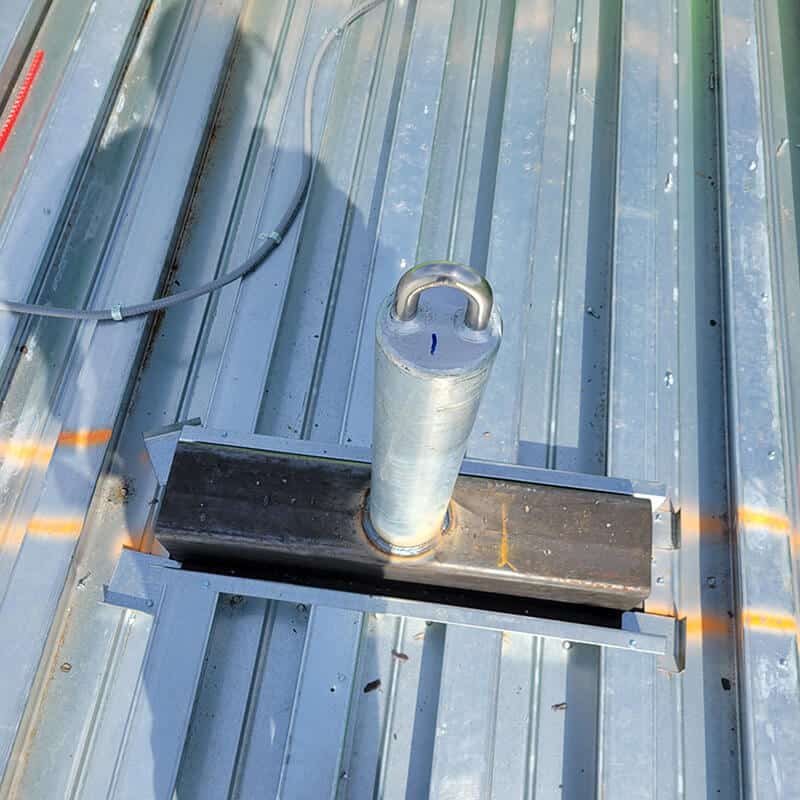We are often asked to provide our equipment for buildings with standing seam roofs. In the past this request would make even our most knowledgeable designers cringe but alas we have engineered a solution.
What is a Standing Seam Roof?
A standing seam roof consists of a series of sheet metal panels that are connected “above” the panels (creating a “standing seam”) in a manner that does not penetrate them.
These are some examples of connections:

Pro-Bel is an official distributor of S-5!® clamps (as seen in the picture below) which connect the panels by tightening the seams together. You can learn more about this product from their website (http://www.s-5.com/home/index.cfm) and by following them on Twitter @S5_TheRightWay.
Structural Requirements
The big obstacle with our equipment being on a standing seam roof is that the panels will not support the applied load/force that our equipment is engineered to accept.o,,mk,ik
CAN/CSA-Z271, Section 6.3.2 – “Strength Requirement” asks that all “anchoring systems shall be designed to resist a force” of five thousand (5,000) pounds. This load/force is indirectly applied to the structure of the roof as well which is where the problem arises.
The Ridge Cap Flashing
Usually with a sloped roof there is a gap at the peak of it between the panels. This is usually covered by a ridge cap flashing which actually does penetrate the flashing and panel (in a strategic way). As seen in the picture below, Z bar connection penetrates the flashing and connects it to the panel. As long as the penetration is “above” and “away” from the envelope (the area inside the flashing) there is no concern for water damage. If the Z bar is installed incorrectly (as shown on the right side of the picture below) then water could potentially enter the envelope and travel toward the unprotected roof material and structure.
The flashing will run along the peak of a sloped roof with a large amount of connections (nails or screws) running along each side of it like so:

Our Solution
Our Engineers agreed that the connections make the flashing the strongest component of a standing seam roof and thus the ideal location to install a piece of our equipment to.
What we did was design a large galvanized rectangular plate with ninety degree angle pieces welded to it (the plate). Our standard stainless steel U-bar is centred on the plate and the angles would be screwed into the flashing (standing seam where the Z bar would be) instead of penetrating the envelope or panel.
We hope to build upon this application as this solution will revolutionize fall protection systems on a standing seam roof.








